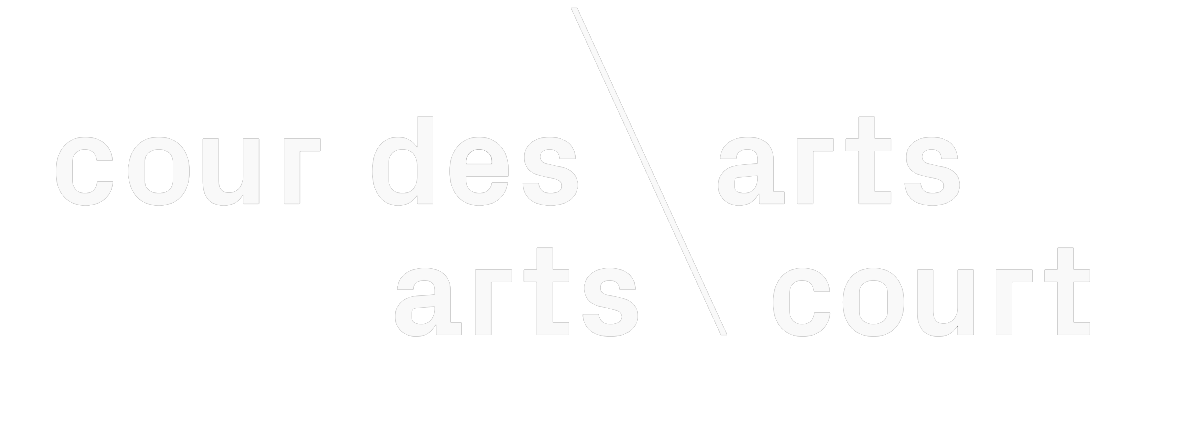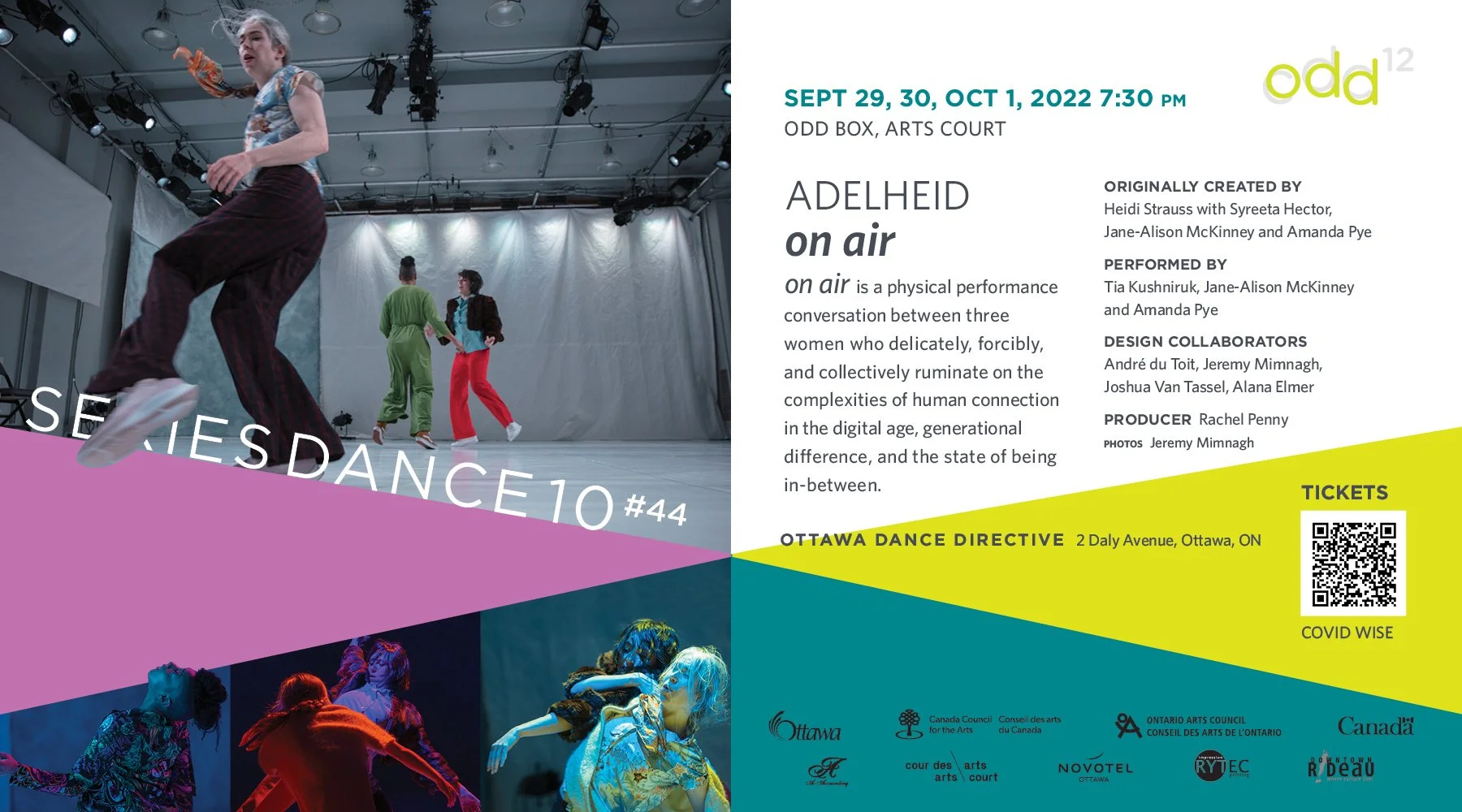English
on air
Originally created by Heidi Strauss with Syreeta Hector, Jane-Alison McKinney and Amanda Pye
Performed by Tia Kushniruk, Jane-Alison McKinney and Amanda Pye
Design collaborators: André du Toit, Jeremy Mimnagh, Joshua Van Tassel, Alana Elmer
Producer: Rachel Penny
about on air :
‘on air’ is a non-linear, non-narrative-based work experienced in the round, in which audio and video live-feed are integrated to create spatial distance with real time responsiveness. The performers come and go. They exist in and outside the performance environment. They are partly there, partly not, sometimes inhabiting the space through projection or audio feed. The absent presence of those performing outside room challenges habitual attention; the moving image attracts the eye, the faceless voice draws the ear, and then, there is who is in front or beside us. These modes of mediated connection were part of daily pandemic life when sharing real rooms was impossible. They continue to exist now as part of the language of our time. They powerfully remind us of presences we can’t see, but are there still. This in-between state is a state of questioning acceptance – of not needing answers to continue – of a continual listening to oneself, others and the moment we are in together.
Français
on air
Créé à l’origine par Heidi Strauss en collaboration avec Syreeta Hector, Jane-Alison McKinney et Amanda Pye
Interprété par Tia Kushniruk, Jane-Alison McKinney et Amanda Pye
Collaborations à la conception : André du Toit, Jeremy Mimnagh, Joshua Van Tassel, Alana Elmer
Production : Rachel Penny
À propos de on air :
« on air » est une œuvre non linéaire, sans narration, vécue dans un espace circulaire dans lequel l’intégration des flux audio et vidéo en direct crée une distance spatiale permettant une réponse en temps réel. Les interprètes vont et viennent dans et hors de l’environnement de la représentation. En partie présents, en partie absents, ils occupent parfois l’espace grâce à une projection ou à un flux audio. La présence des interprètes absents, placés à l’extérieur de la salle, redéfinit l’attention habituelle du public : l’image en mouvement captive l’œil, la voix sans visage attire l’oreille et il y a les présences devant ou à côté. Ce mode de connexion virtuelle faisait partie du quotidien pendant la pandémie lorsqu’il était impossible de partager des œuvres en chair et en os. Cette virtualité continue d’exister, elle s’est maintenant intégrée au langage de notre époque. Elle nous rappelle avec puissance les présences que nous ne pouvons pas voir, mais qui sont toujours là. Dans cet état d’entre-deux, le questionnement est accepté — sans que l’on ait besoin de réponses pour continuer — continuellement à l’écoute du soi, des autres et des moments que nous vivons ensemble.


